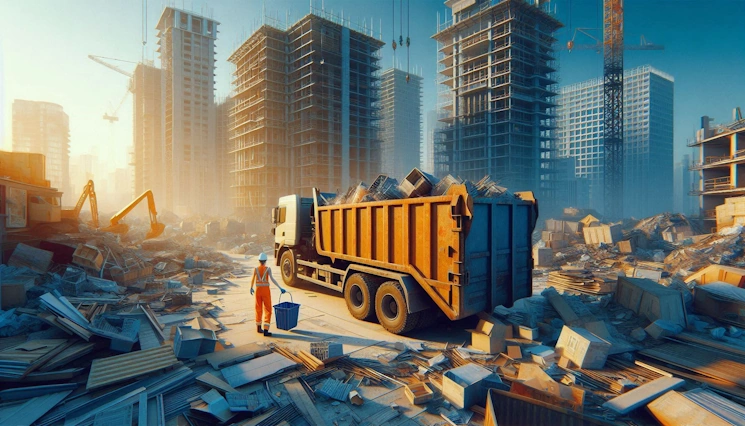Construction waste management is a major challenge for construction professionals in Georgia, both environmentally and economically. Responsible and efficient waste management not only reduces the ecological impact of construction sites, but also improves the image and profitability of companies.
Types of construction waste
- Inert waste: Inert waste mainly consists of mineral materials, such as stone, concrete or rubble. It does not pose a risk to the environment and can be reused in construction or used to fill quarries.
- Hazardous waste: Hazardous waste contains toxic or polluting substances, such as lead, paint or solvents. Its treatment requires specialized facilities to avoid any contamination or nuisance.
- Non-hazardous waste: Non-hazardous waste includes plastic, metal, wood, cardboard and other materials that do not present any particular danger. Its recovery generally involves sorting and recycling.
Construction waste management regulations
To ensure responsible management of construction site waste in Georgia, construction professionals must comply with certain legal obligations:
- Develop a waste management plan, including a diagnosis and recovery objectives.
- Maintain a waste tracking slip, specifying its nature, quantity and destination.
- Use approved collectors for the transport and treatment of waste.
In the event of non-compliance with these obligations, companies incur financial or even criminal penalties.
Key steps for effective construction site waste management
To implement a successful waste management plan, several steps must be followed:
- Carry out a preliminary diagnosis to assess the nature and quantity of waste that will be produced on the construction site.
- Identify the treatment channels adapted to the different types of waste (sorting, recycling, material recovery, energy recovery, disposal).
- Plan the implementation of a specific organization on the construction site to facilitate the collection, storage and disposal of waste.
- Raise awareness and train teams in good practices in waste management.
- Ensure regular monitoring of the management plan and adjust actions if necessary.
Construction waste treatment and recovery solutions
Depending on the nature of the waste, different treatment channels can be implemented:
- Sorting: Sorting consists of separating the different types of waste according to their characteristics in order to optimize their recovery or disposal.
- Recycling: Recycling allows the transformation of waste into new materials or products, such as aggregates from crushed rubble.
- Material recovery: Material recovery consists of using waste as raw materials in other production processes. For example, wood waste can be used to make chipboard.
- Energy recovery: Energy recovery consists of producing energy from waste, for example by incineration or methanization.
- Disposal: Finally, disposal concerns waste that cannot be recovered or recycled and must be stored in suitable facilities (landfills, landfills).
The economic and environmental benefits of recovering construction waste
Optimal management of construction waste can generate several benefits for companies:
- Reduction in costs related to waste collection and treatment.
- Improvement of brand image thanks to a responsible and sustainable approach.
- Access to financial aid for the implementation of recovery solutions.
- Best practices to minimize waste production on construction sites.
- Prioritize reusable or recyclable materials and equipment.
- Limit losses and waste by optimizing the cutting and storage of materials.
- Promote the on-site reuse of waste, such as rubble for earthworks or landscaping.
- Introduce clear signage and pictograms to facilitate the sorting and management of waste on the construction site.
To further reduce the environmental impact of construction sites, here are some tips and concrete examples:
By adopting these best practices, construction professionals will help preserve the environment while improving their economic performance.

